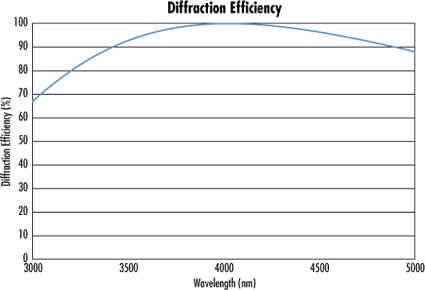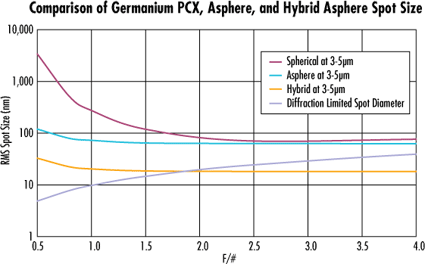
 TECHSPEC® components are designed, specified, or manufactured by Edmund Optics. Learn More
TECHSPEC® components are designed, specified, or manufactured by Edmund Optics. Learn More
Our TECHSPEC® Germanium Infrared (IR) Hybrid Aspheric Lenses provide diffraction limited focusing performance at any wavelength in the 3 – 5μm region, and near diffraction limited performance when used over the entire 3 -5μm spectral range. They are ideal for integration into imaging applications, FTIR spectrometers, or any Mid-Wave IR application utilizing a broad band light source.
Each hybrid aspheric lens is coated for >95% transmission for the most efficient use of costly infrared illumination. However, transmission is limited by the inherent diffraction efficiency of the aspheric surface, yielding lower overall transmission at the extremes of the design spectral band. For custom design or coating options, please contact our Sales Department.


1-800-363-1992
or view regional numbers
QUOTE TOOL
enter stock numbers to begin
Copyright 2025, Edmund Optics Singapore Pte. Ltd, 18 Woodlands Loop #04-00, Singapore 738100
California Consumer Privacy Acts (CCPA): Do Not Sell or Share My Personal Information
California Transparency in Supply Chains Act